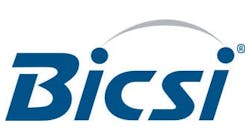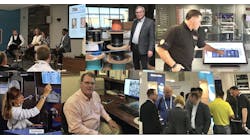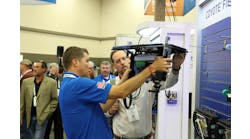Scoring Big With GameChanger
Meeting Stadium Cabling Challenges —
‘Tis the season for sports fans to focus on football playoffs, bowl games and championships. High on their list are game tickets, travel plans, and hopeful celebrations. Far from their minds are the intricacies on how the games are delivered, either in person or through media (either via the Internet or on live TV). Fans don’t care, as long as the network works.
Rest assured that the technology team at Hard Rock Stadium, in Miami, Florida — the site of the Super Bowl on February 2, 2020 — is testing all their network equipment and cabling infrastructure to assure system reliability for the more than 65,000 fans headed to the stadium and the more than 100 million, anticipating to watch the broadcast.
For those of us in the information and communications technology (ICT) business, it’s job priority #1 to make sure the network works. There are many challenges to designing and installing a reliable network cable plant in a stadium environment. Think about the many IP applications found in that environment — from digital A/V such as scoreboards and displays to IP security cameras, access control, LED lighting, and all forms of data communications — digital antenna systems, Wi-Fi, and even hard-wired computers and phones for rotating television affiliate stations and all their sports reporters.
What would happen if in the middle of the Super Bowl, the network failed? The blame would most likely fall on the IT department, who would then turn to the cable and connectivity provider.
Also, consider the size of the venue which includes thousands of seats, concession stands and, of course, the heart of the game and focal point: the field, which is 100 yards long and 53 yards wide with the two 10-yard endzones totaling a minimum of at least 55,000 square feet. Imagine running communications cable to devices on and off the field and figuring out methods to extend network cable past the standard 100-meter limit (i.e., as a reference the 100-yard length equals 300 feet, and note that the maximum copper cable channel distances are limited 328 feet). Clearly, stadiums require long-distance runs — and there are varying solutions for this scenario.
In addition, most new stadiums are multi-purpose ––not just for one sporting event but for many diverse venues such as concerts, baseball, ice hockey, or tennis. Careful planning goes into cable type, termination points ,and cross connections, such as the location of the telecom rooms and enclosures in relation to device requirements and flexibility to adapt.
InvisiLight® Solution for Deploying Fiber
April 2, 2022Go to Market Faster. Speed up Network Deployment
April 2, 2022Episode 10: Fiber Optic Closure Specs Explained…
April 1, 2022Food for Thought from Our 2022 ICT Visionaries
April 1, 2022Cost-Effective Winning Solution
The diverse IP applications now require both data and Power over Ethernet (PoE) over a reliable low-voltage network. When it comes to designing the cabling infrastructure in stadiums, one of the biggest factors is the extended distances between the network switch and the device location. With all challenges, there are solutions and the decision comes down to, what’s most reliable and cost-effective?
The GameChanger™ long-reach cable has proven itself a winner in wide-ranging areas such as large campuses, airports, and of course, stadiums. GameChanger can provide up to 90W (Type 4 PoE) of power with 10 Mb/s up to 260m (850 feet) and 1 Gb/s up to 200m (656 feet) – twice the distance of the maximum standards’ defined channel length.
In addition, GameChanger is a cost-effective solution. Recently, a third-party consultant compared GameChanger to a hybrid fiber solution and a typical Category 6 cable with extenders, in an 860,000-square-foot facility to provide data and power to 106 IP cameras. The longest cable run was 850 feet and the highest bandwidth for the video stream was 20 Mb/s.
The options and cost comparison of the cable, connectivity and miscellaneous active components to provide the data and PoE from the switch to the devices included:
• Hybrid fiber/copper system with power supplied, fiber connectors, repeaters and media converters: $236,170
• Category 6 cable with repeaters/extenders: $104,525
• GameChanger cable including surge protection: $22,305
Check out the details of this case study online: http://www.paigedatacom.com/docs/GameChagner%20Project%20Comparison%20by%20MSB.pdf
More Than Just for Football
Most major stadiums being built or going through renovations to address burgeoning IP applications, specifically advanced digital A/V, also need to be flexible. Whereas a stadium hosting a major football game one week, may need to convert to multiple tennis courts the next.
"Converting a large football stadium to multiple tennis courts, is a whole different ball game," states David Coleman, Senior Vice President, Business Development of Paige Datacom, who is often faced with providing cabling solutions to many different facilities and environments. "You have to take into account the many factors of reconfiguration when changing the venue, which most likely includes different seating formations, as well as the different flooring surfaces and layouts," describes Coleman. "Ultimately, when these changes are made, so are IP device locations. Therefore, the infrastructure, including the cable and pathways, needs to readily adapt," he explains.
For a recent stadium conversion, the location of the IP cameras from a football field to tennis courts needed to be redesigned, and the contractor was faced with changing the cabling and connectivity layout.
Originally the contractor had looked at using extenders on the copper cable, but it meant that the termination equipment would be located under the 50-yard line. "That just wasn’t going to fly, because it meant pulling up the 50-yard line which would be damaging and costly to replace," explains Coleman. "After looking at the options and showing him the GameChanger, he specified this cable as the obvious solution because of its extended distance capability and practical budget," he adds.
With a flexible and reliable infrastructure and cabling options, such as GameChanger, any application can be added to the network at any point by adding a simple connection to the switch.
Like this Article?
Subscribe to ISE magazine and start receiving your FREE monthly copy today!
About the Author: Carol Oliver is the Principal, ICT Consultant at CEO Communications and President-Elect of BICSI (2020-2021). With over 25 years of experience in the ICT Industry, Carol has been a business owner (Everett Communications 1996-2006) as well as working in marketing, training and technical sales support for leading manufacturers of structured cabling solutions. She has served on several committees, including for BICSI and ASIS, and on the BICSI Board of Directors, and has even been one of the founding members of Women in BICSI, including being involved in a mentorship program. For more information about this article, and Carol’s blog posts, please visit http://www.paigedatacom.com/blog/article/scoring-big-with-gamechanger-meeting-stadium-cabling-challenges.









